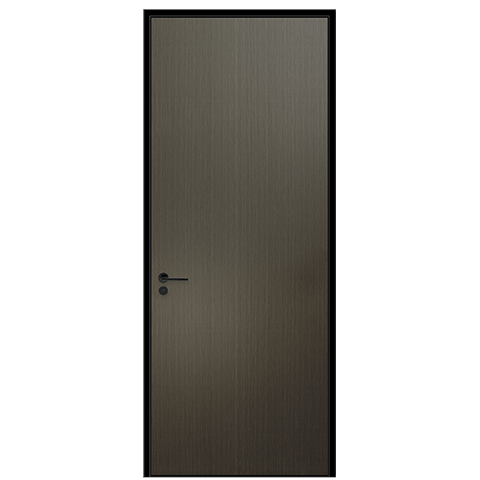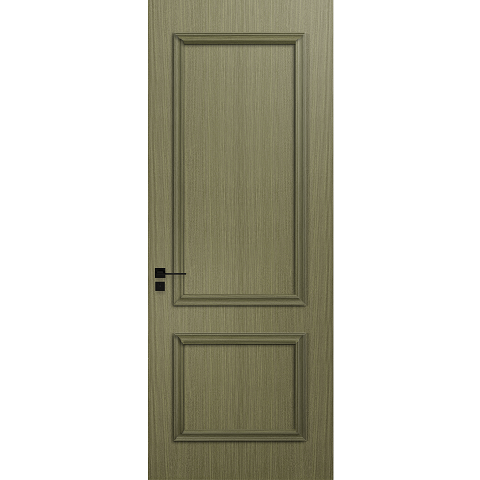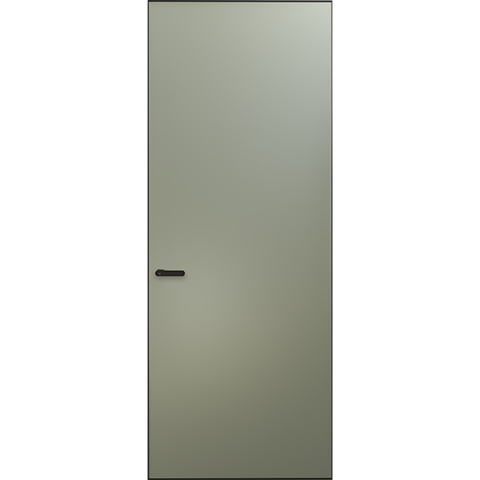How to choose the type of glass for doors, windows and sun room?
Decorating and replacing doors and windows, including balconies, etc. all require a little knowledge about doors and windows. What Baydee introduces this time is the most complete in history - "door, window and sunshine room glass selection manual", which includes the following three parts:
2 points of advice before understanding and purchasing glass (or cognition)
Names, specifications, derivative products, scope of application and precautions of 4 types of glass;
How to configure the glass
01 Any kind of glass can be tempered, 5 mm insulating glass is standard
Before Baydee introduces the following four types of glass, let’s first understand the two concepts in the title, which will help you better choose glass: one is the relationship between tempered glass and non-tempered glass, and the other is 5mm insulating glass It's already standard.
1. Glass tempering is like Burger King's hamburger
The concept of toughened glass is easy to understand, that is, the glass deep-processing factory cuts the original glass according to the size ordered by the customer, grinds and cleans it, puts it into a tempering furnace for high-temperature tempering, and tempers it into tempered glass after it comes out of the furnace.
But when you go to a door and window store, and the storekeeper says seven or eight types of glass, such as hollow glass, laminated glass, safety glass, and coated glass, you can't help but feel confused, huh? I know pieces of tempered glass, but is each piece of hollow, laminated glass tempered glass or selective tempering?
In fact, you can think of tempered glass as Burger King's burgers: any kind of "burger package" you choose (hollow, laminated, safety, coated glass, etc.), you can choose to add tomatoes and onions (steel is not tempered) ). The only difference is that the toppings of the burger are free, and each piece of tempering requires an additional cost.
2. The insulating glass of 5 mm is standard, and glass products should be selected from this
In the "Technical Regulations for the Application of Doors and Windows in Civil Buildings" implemented by Shanghai at the end of 2017, Shanghai's regulations on the application of glass can be summarized in one sentence: insulating glass with a glass thickness of 5 mm is the standard configuration, and it can be regarded as the minimum configuration. (I believe that such regulations will be introduced all over the country in the near future)
How did this regulation come about? This has to say about the current status of the domestic door and window industry. Although a large part of the newly installed door and window glass in the home improvement market is already insulating glass, the quality of insulating glass varies.
Compared with single-layer glass, insulating glass can improve the use experience of doors and windows with its energy-saving, sound insulation, and anti-frost properties (note: under the same thickness).
Especially its energy saving, it is not only "heat insulation" as described in the text, but also when you stand in the home when you replace the insulating glass door and window products, you can really feel that the temperature in the room is lower in summer than before. It is several degrees higher than before in winter, and the electricity bill is saved a lot for a year.
It can be said that it can improve the user experience of doors and windows by 100% at once, and at the same time, the price is only 20% more expensive than single-layer glass.
Only with the popularization of insulating glass, glass with more comprehensive functions such as laminated hollow glass and Low-E hollow glass can be accepted by more people.
02 Names and uses of 4 types of glass
Well, after introducing the above two points, the real dry goods begin. You may use the following four types of glass on aluminum alloy doors and windows and sun rooms, they are insulating glass, laminated glass, laminated insulating glass, and Low-E coated glass:
1. Hollow glass
Features: wide application range, good thermal insulation performance; common specifications: 5+9 A+5, 5+12 A+5, 6+12 A+6, 5+20 A+5 (Note: 5+12 A +5 means 5 mm glass + 12 mm gas layer + 5 mm glass)
Applicable places: doors and windows, sun room are applicable (note: except the sun roof)
Unsuitable places: living in scenes with high low-frequency noise such as roads and railways, sunny roofs;
Other products about insulating glass: three-glass double-cavity double insulating glass, frosted insulating glass, built-in louver insulating glass, etc. (Note: and tempered products of these products, which will not be repeated below);
Note: (1) In consideration of cost performance, it is generally recommended to install tempered insulating glass; (2) Middle and high-rise buildings (Note: 7-8 floors and above) must use insulating tempered glass.
Let me explain the thickness of the glass: Although the thicker the glass, the better its performance, but due to the cost factor, there is no need to pursue perfection. We generally install according to the national standard:
If the area of single glass is ≤ 2 m, use 5 mm; if the area of single glass is ≤ 3 m, use 6 mm; if the area of single glass is ≤ 4 m, use 8 mm;
Let me explain the thickness of the gas layer: theoretically, the thicker the gas layer, the better, but it is not absolute, because when the thickness of the gas layer reaches a certain level, the gas inside the two pieces of glass will convect, thereby reducing the heat insulation effect. So if a merchant tells you that the thermal insulation of 6+20 A+6 is much greater than that of 6+12 A+6, he must be fooling you.
Let me talk about the reason why insulating glass is not suitable for places with high low-frequency noise such as the elevated railway side: every kind of glass has a frequency band noise that cannot be isolated, and the sound that insulating glass is difficult to isolate is precisely the low-frequency noise that often occurs on the side of the road.
Therefore, if you live on the side of the road, don't try to rely on increasing the thickness of the insulating glass for sound insulation. You should choose laminated glass or laminated insulating glass.
Finally, let's extend the derivative products of insulating glass: it adds some special functions on the basis of its basic functions. For example, Baydee's favorite frosted insulating glass can be well applied in bathrooms where both privacy and light transmission are required;
Built-in louver insulating glass, placing the venetian blind in the hollow layer can not only shade the sun, but also solve the troublesome problem of louver cleaning; compared with ordinary single-layer insulating glass, the thermal insulation effect is better Remarkable (great for a northern partner's home).
2. Laminated glass (also known as laminated glass)
Features: The sound insulation effect is better than insulating glass, and the safety is good, but the heat insulation is worse than insulating glass; common specifications: 5+0.76 PVB +5, 6+0.76 PVB +6, 8 +1.14 PVB +8 (Note: 5+ 0.76 PVB +5 means: 5 mm glass + 0.76 mm thick PVB film + 5 mm glass)
Applicable places: (1) Scenes with safety requirements such as sunny roofs and indoor partitions; (2) Scenes with high sound insulation requirements;
Unsuitable places: scenes with strong heat insulation requirements such as bay windows and south-facing bedrooms;
Other products about laminated glass: triple laminated glass (three pieces of glass, two layers of film), laminated glass for decoration (interlayer is PET film with various patterns)
Note: The thermal insulation effect of a single laminated glass is not ideal (if you want sound insulation and thermal insulation, the two types of glass described below are preferred).
First, let’s explain the glue layer of laminated glass: there are many types of laminated materials, and most of them are PVB film and glue on home improvement doors and windows (the boss will say this is "wet laminated glue", here is a big pit). The film endows the laminated glass with three characteristics: the damping function of filtering sound waves (sound insulation: reduce the volume transmission by reducing the vibration amplitude of sound waves), the function of filtering ultraviolet rays (protecting furniture: absorbing 99% of ultraviolet rays in sunlight), and strengthening the glass strength And it can maintain the shape without splashing glass slag when a single piece is broken.
Since the PVB film is 0.38 mm thick, the thickness of the laminated glass interlayer is a multiple of 0.38 mm: 0.38 mm, 0.76 mm, 1.14 mm... (like cheese slices in a hamburger, 0.38 mm, one piece at a time) , the thicker the interlayer, the better the properties of the laminated glass, and the price will also rise.
Generally, two pieces of glass (0.76 mm) are added, and when added to 4 or 5 pieces, it can even be bulletproof.
Let’s talk about the sound insulation of laminated glass: PVB laminated film is a Q-bomb Q-bomb material (like a transparent table mat), so it has the function of buffering sound wave vibration, and it is more effective than insulating glass in solving the low-frequency noise problem.
But the sandwich layer also has two small defects: the sound insulation ability of high-frequency noise is not enough (car horns, etc.); and the glue layer will harden in winter, and the sound insulation effect will deteriorate. So in general, if you want to completely solve the noise problem in places like the roadside, you should choose laminated + hollow combined glass.
Finally, talk about the derivative products of laminated glass: it adds some special functions on the basis of its basic functions. For example, decorative laminated glass (painting on the laminated film) is used for interior partition decoration; double-layer laminated glass (Big Mac Burger) increases the thickness of the product to improve the performance of the glass.
3. Laminated insulating glass
Features: A collection of the advantages of insulating glass and laminated glass. Common specifications: 6+9 A+5+0.76 PVB+5, 6+12 A+5+0.76 PVB+5, 5+1.14 PVB+5+12 A+5, 6+1.14 PVB+6+12 A+6 (Note: 5+1.14 PVB+5+12 A+5 means: 5 mm glass + 1.14 mm thick PVB film + 5 mm glass + 12 mm hollow layer + 5 mm glass combination).
Applicable places: suitable for most scenes in the home, especially bedrooms facing the street, sunny roofs, living balconies, etc.
Where it is not applicable: There is not much demand for scenes such as kitchens, bathrooms, and clothes-drying balconies.
Note: Although laminated insulating glass is very suitable for home decoration glass, but because of one more production process, the yield rate is lower, so its price will be about twice as expensive as insulating glass and laminated glass. Therefore, in kitchens, bathrooms and other places where the need for sound insulation is not large, and the need for heat insulation on the clothes drying balcony is not large, it is good to choose hollow glass.
Laminated insulating glass, you can simply regard it as a collection of insulating glass and laminated glass, it has the advantages of both, especially in terms of sound insulation and heat preservation performance, it can isolate various noises of high, medium and low frequencies, and it can Save electricity bills for air conditioners in all seasons.
But note that it has three limitations: First, the price is almost the same as the sum of insulating glass + laminated glass, which is expensive; second, the thickness of the laminated insulating glass is large, and the size of the window frame needs to be matched when matching; Consisting of 3 pieces of glass, it is relatively heavy, and requires special attention to the hardware and glass fixing process of the casement and sliding sash.
Because of its price, we can selectively use it in the process of home decoration to improve the cost performance.
4. Low-E coated glass characteristics: greatly reduce the thermal conductivity of the glass, thereby improving the thermal insulation performance of the glass.
Common specifications: 5 Low-E+12 A+5, 6 Low-E+12 A+6, 6 Low-E+12 A+5+0.76 PVB +5 (Note: 5 Low-E+12 A+5 means 5 mm Low-E coated glass + 12 mm gas layer + 5 mm glass)
Applicable places: suitable for scenes with large glass area and sufficient light, such as south bedroom, sun room, bay window sill.
Unsuitable places: the shade and places such as kitchens and bathrooms are not very useful.
Note: Strictly speaking, Low-E coated glass is not a classification of glass, it is a glass coating process. When you are purchasing glass, you can ask your boss to upgrade to Low-E glass with low thermal conductivity (Here, Baydee lists it separately for better distinction and classification of glass;)
Significance of Low-E glass: Because of the energy-saving characteristics of Low-E glass, it has been widely used in the field of engineering curtain walls.
With the maturity of the production process and the increase of manufacturers, the reduction of production cost makes it very cost-effective, very suitable for home decoration doors and windows, such as upgrading to Low-E glass, the price may increase by tens of yuan/㎡, this cost can be realized from indoor living It is reflected in the experience and can also be recovered from the saved electricity bills.
The principle of Low-E glass: Low-E glass is scientifically called "low-emissivity coated glass". It coats a layer of metal silver film on the inner surface of the glass, and uses the characteristics of special metals to reflect light waves in the far-infrared region to improve the reflection of the glass. The ability of heat energy, thereby greatly improving the insulation effect.
Light transmittance of Low-E glass: The light transmittance of Low-E glass is directly proportional to the thermal conductivity, the lower the light transmittance, the lower the thermal conductivity. Therefore, it is recommended that the doors and windows of rooms with poor lighting on low floors should choose high-transmittance Low-E glass with a light transmittance of more than 70%, and medium-transparent Low-E glass with a light transmittance of 50-60% on high floors with good lighting.
03 Configuration of glass
At present, in the home improvement market, the mainstream is these 4 types of glass (actually 3 types, Low-E film is a further addition to glass). After knowing their advantages and disadvantages, we can decide how to increase or decrease the glass according to our own situation and budget:
After deciding the type of glass, you can also decide the thickness of the glass, hollow layer, interlayer, whether to add Low-E film, and light transmittance.
First: total configuration and total budget
For most families, the tempered insulating glass configuration of 5+12 A+5 is already sufficient, the only thing that needs to be considered is whether to add Low-E.
If the budget is sufficient, the whole house configuration can be directly replaced with laminated hollow glass with Low-E such as 6 (Low-E)+9 A+5+0.76 PVB+5.
Second: differentiated implementation needs
Of course, if the whole house is installed with the highest configuration of glass, the price will definitely be high. In order to apply what we have learned and budget, we can choose different glass configurations:
Choose an acceptable quotation for the basic configuration of glass for scenes such as insignificant kitchens and washing balconies;
In scenes such as bedrooms with strong sound insulation requirements, in the basic configuration, add glue according to the budget, and add glass, hollow layer, and thickness of the laminated layer; In terms of configuration, add Low-E film according to the budget, and whether to add laminated glass, add glass, hollow layer, and laminated layer thickness;
In the bathroom, it is required to add a frosted layer on the basis of insulating glass; in the study room, an additional high-transparency glass is required....
Finally, one more sentence: reasonable installation is also a prerequisite for the performance of doors and windows to meet standards.
 Hot Recommendation
Hot Recommendation
 Latest Products
Latest Products



